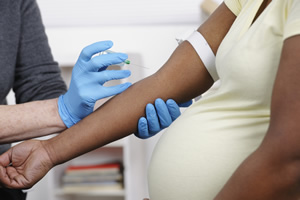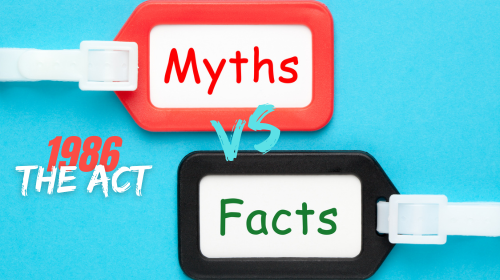
The February 2019 meeting of the Advisory Committee on Immunization Practices (ACIP) saw new committee members introduced and changes to public comment enacted.
New Code of Conduct for ACIP Public Comment Sessions
ACIP changed their public comment rules for public meetings,1 due to the recent increase in individuals with concerns about vaccine safety and vaccine policies traveling to ACIP meetings to make a public comment. These changes include an increase to 75 minutes for public comment sessions noted on the agenda, and instituting a blind lottery when there are more individuals signed up to give comment than there is time. Written public comments will also now be published on the Regulations.gov website.
Influenza Vaccine Only 44 Percent Effective
CDC reported to ACIP that influenza infection activity during the U.S. 2018-2019 influenza season has been average with the 2009 H1N1 influenza A virus continuing to cause most lab confirmed cases. Across many U.S. states, currently there is a very high rate of influenza-like-illness (ILI). However, typically about 80 percent of ILI during the flu season is due to respiratory infections caused by other types of viruses and bacteria.
CDC interim estimates on the overall effectiveness of this season's influenza vaccine is approximately 44 percent for all age groups.2 This means that, for the estimated 20 percent 3 of Americans likely to become infected by type A or B influenza, the vaccine is only 44 percent effective.
The CDC reported that the 2018-2019 influenza vaccine appears to have a higher protective rate of 61 percent for children aged 6 months to 17 years of age. The CDC also noted that H3N2 strains of influenza were becoming more active in the Southeast portions of the U.S. This H3N2 activity delayed strain identification of next season's influenza vaccine and may impact future influenza vaccine supply.4
New Data for Afluria for Babies and Toddlers
Seqirus, the maker of Afluria Quadrivalent (QIV) influenza vaccine, presented Phase 3 trial data on Afluria for children six months to 59 months old. The data was generated using a non-inferiority model that compared Fluzone vaccine with Afluria vaccine. The Seqirus data provided to ACIP demonstrated that Afluria had similar safety and tolerability to the Fluzone comparator.5 Afluria QIV was given FDA approval in 2018 for use in this population based on this Phase 3 trial data.
New Study Claims Flu Shot Doesn't Cause Miscarriage
In an attempt to reassure pregnant women that it is safe for a flu shot to be given during every pregnancy in any trimester, a new study was presented to ACIP that found influenza vaccine did not cause miscarriages in the women evaluated in the study. This new study contradicts previous studies funded by the CDC that evaluated miscarriages among pregnant women given influenza vaccinations during the 2010-11 and 2011-12 flu seasons, which found an increased risk of miscarriage within 28 days of vaccine administration and a significant association with miscarriage in women who had received a flu shot in the previous flu season.
The study conducted by Marshfield Clinic Research Institute examined data from the CDC's Vaccine Safety Datalink (VSD) for three flu seasons (2012-13, 2013-14 and 2014-15) with the objective of determining whether there was an increased risk of miscarriage in the 28 day window noted in the previous studies and included whether the women had received a flu shot the previous season. Miscarriages were adjudicated by an obstetrician co-investigator blinded to the vaccination status of the pregnant woman.

This study differed from the previous studies in that it was three times larger than previous studies and looked at different flu seasons. These new findings are likely to result in increased pressure being placed on pregnant women by doctors to receive a flu shot during any trimester of every pregnancy, despite data from the federal vaccine injury compensation program (VICP) showing that vaccine injuries from influenza vaccines are now the leading compensated claim.6
Additionally, a 2018 Cochrane review of influenza vaccination in healthy adults found that the flu vaccine may have only a modest impact on reducing the number of cases of influenza and influenza-like illness. The data was insufficient to determine whether vaccination had any impact on lost work days or reducing serious complications of influenza during the flu season, and study authors went on to state7
We were uncertain of the protection provided to pregnant women against ILI and influenza by the inactivated influenza vaccine, or this was at least very limited.
Learn more about influenza and influenza vaccine at NVIC's influenza webpages.
CDC Investigating Possible Safety Signal for Shingrix Vaccine
After months of high demand and short supply for Shingrix (RZV) vaccine, the CDC's Dr. Tom Shimabukuro of the Immunization Safety Office (ISO) reported potential safety concerns about the shingles vaccine manufactured by GlaxoSmithKline (GSK) and licensed by the FDA in October 2017.
Reaction reports that Shingrix is causing Guillain Barre Syndrome (GBS) have been filed in both the federal vaccine adverse event vaccine system (VAERS) database and the CDC's Vaccine Safety Datalink (VSD) database. GBS involves inflammation of the peripheral nerves that can cause varying degrees of temporary or chronic paralysis of different parts of the body, including full body paralysis. According the U.S. National Institutes of Health (NIH) GBS is thought to occur at a rate of one in one million individuals.8
So far, two cases out of the four reported GBS cases following Shingrix vaccination in the VSD have been confirmed to be plausibly related to the vaccine, based on the established risk window of 0 to 42 days post vaccination.9 There have been 35 reports of GBS developing after Shingrix vaccinations filed with VAERS, 19 of which met established criteria under the Brighton Collaboration definition for GBS. There were an additional 6 VAERS reports of GBS following Shingrix vaccinations that were diagnosed by physicians.10
Using Proportional Reporting Ratio (PRR) analysis, the CDC stated that these GBS reports when compared against Pneumovax 23, Zostvax and Influenza vaccines indicates that the rate of GBS is not disproportional. Based on the data presented, CDC estimates that GBS is occurring at a rate of 2.8 cases per million doses of Shingrix vaccine.11
Monitoring of Potential Shingrix Safety Signal to Continue
The FDA is currently exploring options for analyzing Medicare and Medicaid records for a potential safety signal with the Shingrix vaccine and the CDC is conducting a clinical review of the 28 GBS cases diagnosed after Shingrix vaccination by a physician or those cases meeting pre-set criteria.
The CDC reported that, so far, there is no other safety signal in play for Shingrix based on their analysis but monitoring will continue. Representatives from GSK also stated that their post-licensure data has not detected a safety signal, but that monitoring will continue.
No policy change for use of Shingrix was made and additional data is likely to be reported to ACIP at their upcoming June meeting.

Shringrix Preference and Pending Zostavax Lawsuits
Shingrix was given preference over Zostavax by ACIP in October of 2017.12 This latest shingles vaccine safety concern comes in the midst of hundreds of injury and failure lawsuits filed against Merck, the maker of Zostavax, a live virus shingles vaccine and the first one licensed in the U.S. in 2006 that ACIP recommended for adults over age 60. In 2011, the FDA expanded the Zostavax license for use by adults over age 50.13
Individuals injured by Shingrix or Zostavax are exempt from using the federal vaccine injury compensation program (VICP) and can sue vaccine manufacturers directly because these vaccines are not routinely recommended by ACIP for children or pregnant women.
ACIP May Reconsider PCV13 Recommendation for Seniors
As part of its routine evaluation of recommendations, ACIP continued to consider data presented by its workgroup on the value of recommending that PCV13 pneumococcal vaccine be given to healthy 65+ seniors. There is a long standing recommendation for all seniors to get PPSV23 and PCV13. However, data presented on PCV13 demonstrated that to date it is not effective against pneumococcal serotype 3 (ST3),14 which represents the majority of the disease in seniors. There was discussion about whether continuing the recommendation for PCV13 has public health value for those over 65 years old.
A representative from Pfizer, the manufacturer of PCV13, argued that the CDC workgroup data was too conservative and stated that PCV13 had a direct effect on ST3. ACIP is expected to vote on this issue at the June meeting. Removal of the PCV13 recommendation would simplify standard of care administration of pneumococcal vaccine for seniors by confining it to PPSV23 vaccine.
ACIP members expressed concern that discontinuing the current PCV13 recommendation for seniors would dismantle the investment already made and that a reinvestment would be required in the near future due to new pneumococcal vaccines currently in phase II trials, (PCV15 and PCV20), which are designed to provide broader protection from the disease for adults.
Vaxelis Combination Vaccine
The newly FDA approved pediatric hexavalent Vaxelis vaccine is a joint venture between Sanofi and Merck and contains antigens for diphtheria, tetanus, pertussis, polio, hepatitis B, and Haemophilus influenzae type b (Hib). ACIP is currently considering whether Vaxelis should be preferentially recommended for use in the American Indian/Alaska Native (AI/AN) populations and if it should be included as an option in the Vaccines for Children program for infants at two, four and six months of age.
Most of the data presented to ACIP on the 5 in 1 combination shot was based on noninferiority models. There were two immunogenicity endpoint failures and high fevers noted for Vaxelis. However, this did not appear to concern the ACIP workgroup as the majority of endpoints were met and there were no medically related events from fever reported. Serious adverse event data noted two cases of SIDS, one case of asphyxia, one case of hydrocephalus, and one case of Group A strep, which were all judged by researchers to not be related to the vaccine.
The data presented also noted that there is no immunogenicity data for Vaxelis vaccine following the first dose given at two months. If the immune response to Hib antigen between the first and second dose of Vaxelis is low, that may put AI/AN infants at an increased risk for HIB meningitis, if ACIP were to give Vaxelis a preferred recommendation for infants. As a result, ACIP's work group has requested immunogenicity data about Vaxelis induced immunogenicity after the first dose.
A Merck representative argued that Vaxelis would decrease the number of injections received by children, which would increase parental compliance. Currently Vaxelis is approved by the FDA for use in infants two, four and six months old. However, production is limited and Merck is ramping up Vaxelis production to make the 5 in 1 combination vaccine widely available in the U.S. in 2020.15
ACIP may vote on this issue at its June meeting.
ACIP Recommends Booster Dose of Anthrax Vaccine for First Responders
During the February meeting, ACIP voted that individuals who are not at a current high risk for anthrax exposure, but who may be at risk in the future, such as health care workers and other first responders to bioterrorism attack, may want to receive a dose of anthrax vaccine every three years. This is a Category B recommendation, meaning that it is optional for individuals who fall into this type of risk group.
The older stockpiled anthrax vaccine would be used until the supply runs out and then the new anthrax vaccine (AV7909) would be used. The U.S. is currently the only country making a switch to AV7909 as part of its stockpile in the event of a bioterrorism attack.
Hepatitis A Vaccine Likely to be Routinely Recommended for Individuals with HIV
Data was also presented by the ACIP’s workgroup for consideration of HIV positive individuals as a risk group to routinely receive the hepatitis A vaccine. This policy consideration is due to studies that suggest that hepatitis A infection in HIV positive individuals increases HIV replication,16 making it harder to treat HIV.
This potential change, which would impact approximately 400,000 Americans who have been diagnosed HIV positive, will be voted on at a future ACIP meeting.
Conflicts of Interest Declarations
Newly appointed ACIP member Dr. Stefan Gravenstein of Brown University declared that he had a conflict of interest due to his association with vaccine makers Sanofi Pasteur, Seqirus and Merck. Last year, Dr. Gravenstein also declared conflicts of interest with vaccine makers Pfizer, Novartis, Janssen and GlaxoSmithKline. Dr. Gravenstein has worked with the influenza, RSV, e coli, pneumococcal and shingles vaccines.17
References:
1 CDC. ACIP Public Comment. Feb. 25, 2019.
2 CDC. ACIP Influenza Presentation – Summary. Feb. 25, 2019.
3 WebMD. What Are Your Odds of Getting the Flu? 2017.
4 L. Schnirring. WHO reveals delayed pick for H3N2 flu vaccine strain. CIDRAP News. Mar. 21, 2019.
5 CDC. ACIP Meeting Presentation - Seqirus Afluria QIV Phase III Data. Feb. 25, 2019.
6 HRSA. Data & Statistics - National Vaccine Injury Compensation Program. Mar. 1, 2019.
7 Demicheli V, Jefferson T et al. Vaccines for preventing influenza in healthy adults. Cochrane Database of Systematic Reviews. Feb. 1, 2018
8 NIH. Guillian-Barré Syndrome Fact Sheet. Jul. 6, 2018.
9 CDC. ACIP Presentation - CDC ISO Update on post-licensure safety monitoring of recombinant zoster vaccine (RZV, Shingrix). Feb. 28, 2019.
10 CDC. February 2019 ACIP Meeting - Zoster & Hepatitis vaccines. Mar. 20, 2019.
13 I. Jackson. Shingles Lawsuit Filed Over Failure of Zostavax Vaccine. AboutLawsuits.com. Feb. 28, 2018.
14 CDC. ACIP Presentation - PCV13 Direct and Indirect Effects on Serotype 3 Disease. Feb. 25, 2019.
15 E. Sgonowsky. Sanofi, Merck win FDA nod for 6-in-1 pediatric vaccine Vaxelis. FiercePharma. Jan. 2, 2019.
16 CDC. ACIP Meeting Presentation – Hepatitis Vaccines. Feb. 28, 2019.
17 CDC. University Hospitals Presentation - Fluzone HD vs SDs cluster randomized trial in US NHs. S. Gravenstein, M.D. Feb. 18, 2017.




.png?width=991&height=280&ext=.png)



Leave a comment
Your email address will not be published. Required fields are marked with an *